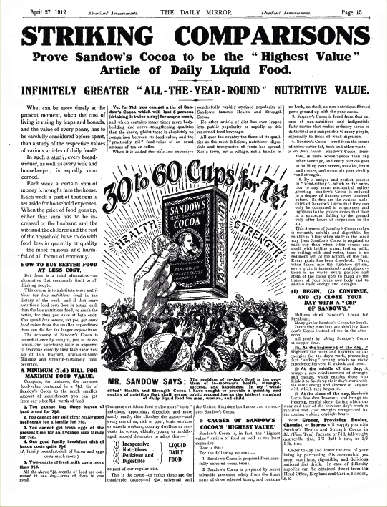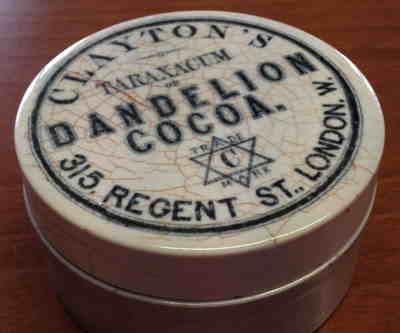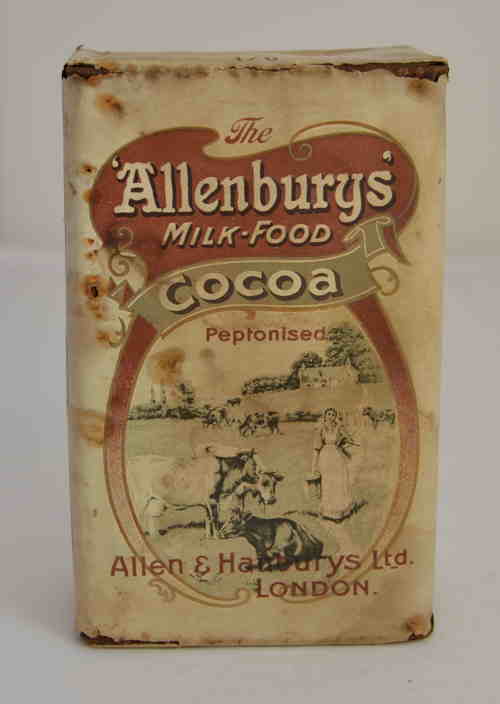Cocoa has always been admired for its health-enhancing properties. The Aztecs used it as a cure for dysentery in a potion made from cacao mixed with the supposed ground bones of their giant ancestors, exhumed from the mountains.
17th century accounts suggested that drinking chocolate could alleviate asthma, increase breast milk production, and even expel kidney stones. M. Sury's chocolate house in Oxford issued a flyer in 1660 claiming that cocoa could cure consumption and coughs, clean the teeth, make you fat, corpulent, fair and amiable, and even aid conception.
In 1794 London-based Francis Garratt introduced Queen's Cocoa including a small amount of malaria medicine, Peruvian bark, providing a source of quinine.
Throughout the 19th century cocoa was recommended for calming nerves and as a stimulant, for constipated and loose bowels. It was developed by medics and chemists – although health claims were often entirely without evidence.
There are three main ways in which cocoa was said to encourage good health; through the intrinsic compounds in the cocoa bean itself, through medicinal additives put into commercial chocolate products, and through cocoa’s protein and energy value.
These claims are not entirely without substance, as cacao has literally hundreds of chemical compound ingredients. Numerous modern studies have shown that cocoa consumption can provide a measure of protection against hypertension and cardiovascular disease, may actively reduce cholesterol, and may be beneficial against gastrointestinal illnesses, respiratory disorders and even cancer. A frequent intake of dark chocolate has even been linked to a reduction in body fat and BMI. 100 grams of cocoa can provide up to 20 per cent of the energy needs of a young adult, as well as substantial amounts of their vitamin and mineral requirements.
Chemist shops would promote their own cocoa blends, with some becoming major cocoa producers - often adding the most bizarre medicinal added ingredients. Iceland Moss (a type of lichen) and dandelions were believed to have beneficial properties. But the active ingredient in others was less clear: In 1855 Dr William Batchelour produced The Nerve Cocoa, combining cocoa with his own, unexplained, NervoArterial Essence.

Sometimes a suggestive brand name was all that was needed to boost sales: in the 1880s Henry Thorne & Co was highly successful with its simply-named Health Cocoa. However, in 1912 the company was looking to protect the brand against Eugen Sandow, which was using the slogan ‘Health and Strength Cocoa’ to promote its new product. This proved the biggest court action ever seen in the British cocoa industry, and Sandow eventually prevailed.
EXHIBIT - LONDON 1868

Clayton’s Taraxacum Dandelion Cocoa was sold in the chemist's standard china pots in 1868, advertised as a cure for constipation, indigestion, heartburn, nervousness, rheumatism, biliousness, diarrhoea, lumbago, sciatica, debility and liver complaints.
EXHIBIT - WARTIME 1940

Allen & Hanbury’s Peptonised Cocoa was a blend of the infant and invalid food specialist's Allenbury's Milk Food combined with cocoa. Over three decades it was variously known as Allenbury's Cocoa and Milk, Allenbury's Milk Chocolate, and finally Allenbury’s Milk Food Cocoa, when it supplemented the diet of injured servicemen in 1940.